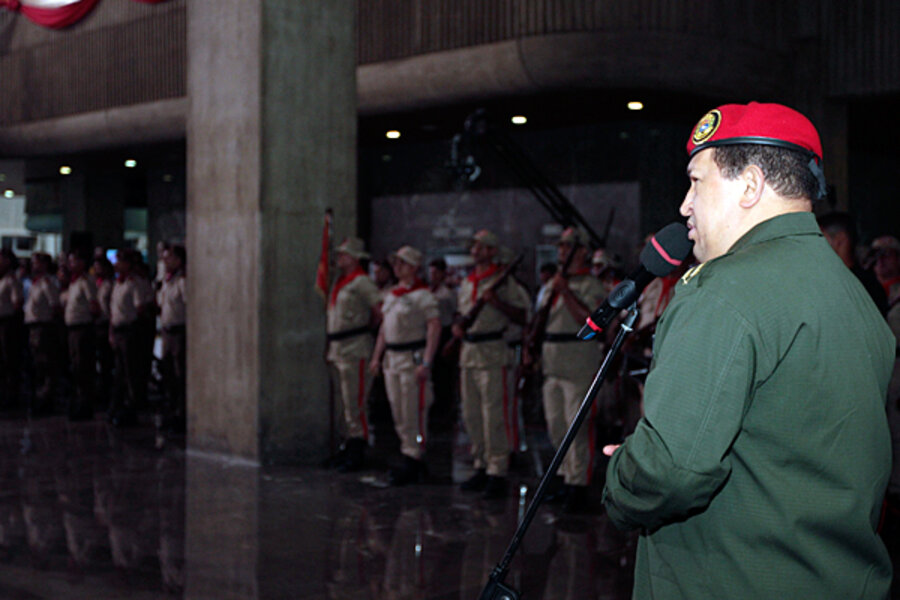Venezuela building drones and assault rifles
• A version of this post ran on the author's blog, bloggingsbyboz.com. The views expressed are the author's own.
Venezuelan President Hugo Chavez said [Wednesday] that his country has built several unmanned aerial vehicles (UAVs) and has plans to potentially export them to other Latin American countries. The president of Compañia Anonima Venezolana de Industrias Militares (Cavim) says the drones have a radius of 100km, a flying time of 90 minutes, and a maximum altitude of 3,000 feet. The plane can transmit live streaming video and take high resolution pictures.
Mr. Chavez also announced that the country has built 3,000 AK-103 assault rifles, even though its joint factory with Russia is not complete, and will be capable of building 25,000 rifles per year.
We should fear the guns far more than we fear the drones.
Building drones is easy. Over a dozen of the hemisphere's militaries already have drones and more are on the way. My prediction, as I've stated in various recent presentations, is that private companies and criminal groups will have unmanned surveillance drones within 5-10 years in the region. In fact, the DIY Drones community in the US has people building unmanned vehicles in their backyards for only a couple hundred or couple thousand dollars. Venezuela's drones are probably not a threat and can be easily taken down by most of Venezuela's neighbors if they are used maliciously.
The small arms, thousands of new rifles entering the region with little or no accountability, will cause decades of violence in Venezuela and its neighbors. They are easy to hide and traffic and easy to use and find ammunition (especially if Venezuela completes its ammunition factory with Russia). The rifles aren't being marked or tracked off the assembly line and weapons regularly go missing or stolen from Venezuelan military supplies. They're going to end up in the hands of Chavista paramilitaries in Venezuela, the Revolutionary Armed Forces of Colombia (FARC), and emerging paramilitary organizations (BACRIM) in Colombia, and gangs in Brazil.
Drones are new and exciting to talk about, but small arms and light weapons remain the much larger threat to the hemisphere's security. Venezuela's neighbors should welcome a discussion about the UAVs and even work together in building them so the region has shared capabilities. It's a fun project with lots of good civilian and military uses. Meanwhile, the same neighbors should be very hesitant and even warn Chavez against the manufacturing of additional small arms like the AK-103. Though it isn't the Venezuelan government's intent, those rifles are going [to be] stolen, trafficked, and turned against security forces and civilian populations in the hemisphere. More assault rifles floating around is the last thing South America needs.
– James Bosworth is a freelance writer and consultant who runs Bloggings by Boz.








